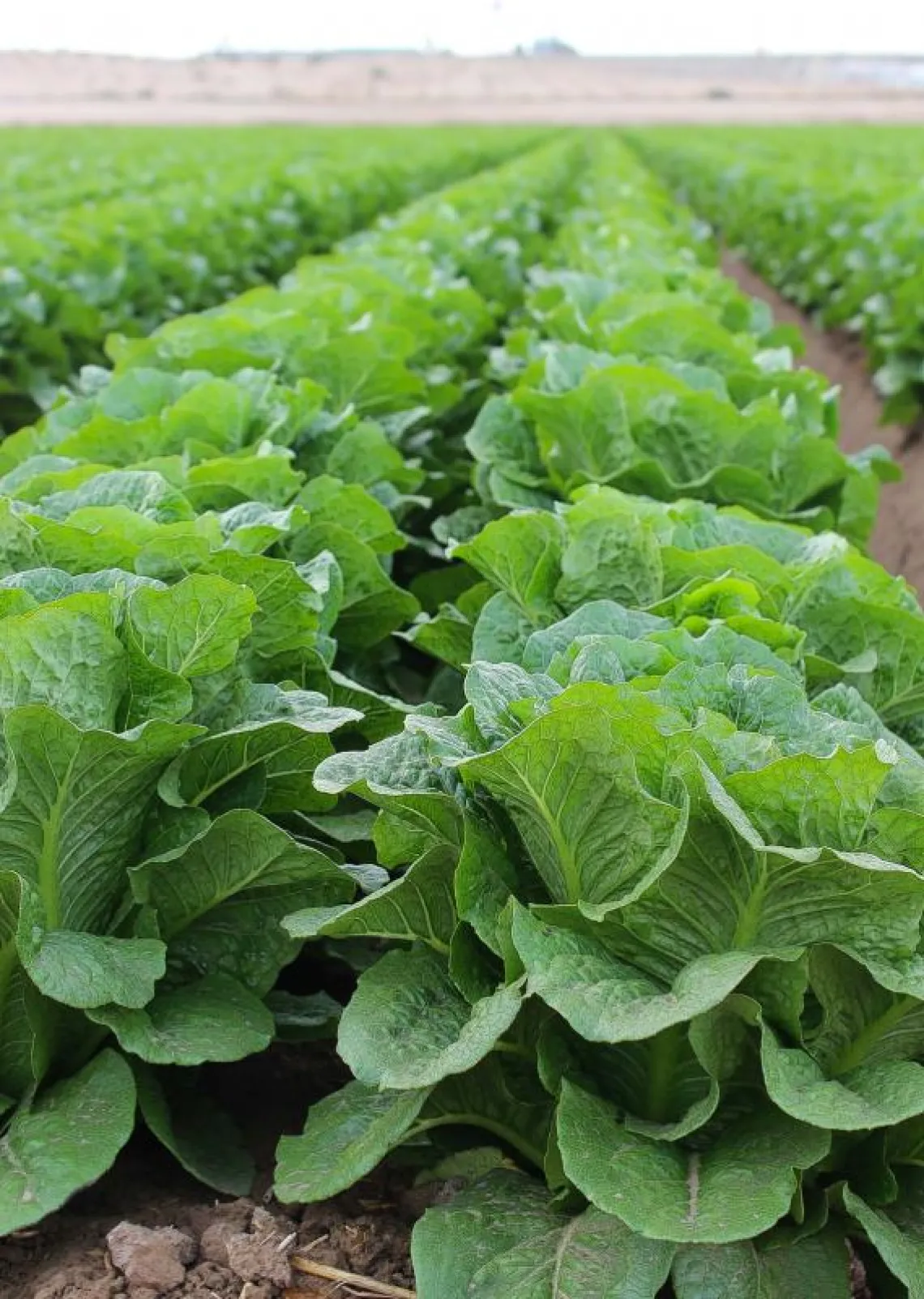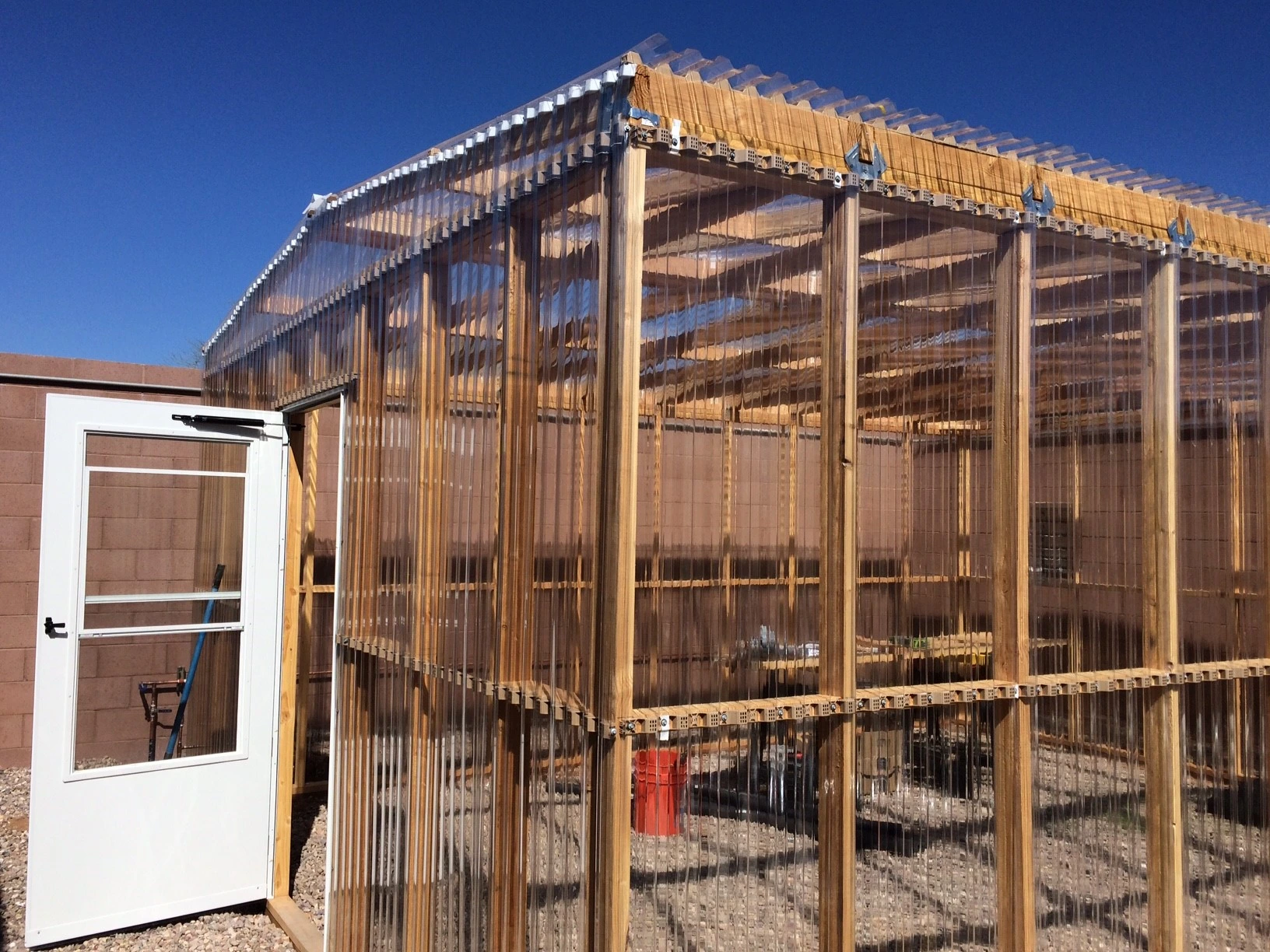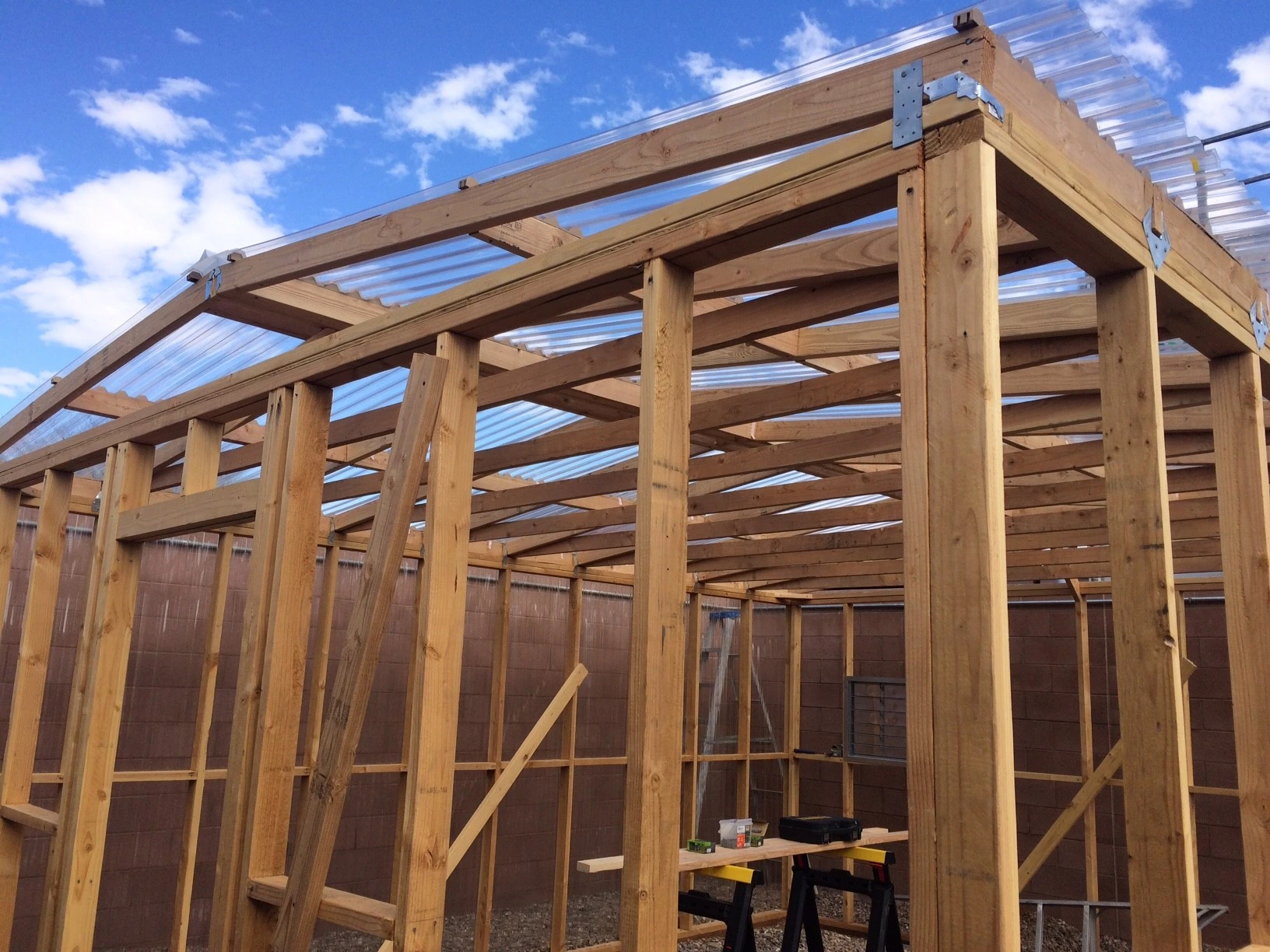WEST Researchers gear up for Irrigation Study

Construction of a greenhouse at WEST Center will be closely followed by the launch of a new study with importance to agriculture and public health. The study, headed by Dr. Kelly Bright and Dr. Charles Gerba, seeks to quantify die-off rates of several pathogens associated with foodborne illnesses from leafy greens.
As explained by Dr. Bright, approximately 20-40% of produce-related foodborne outbreaks are associated with leafy greens, and irrigation water has been implicated in several recent outbreaks. Understanding and managing this situation is pressing for food safety and public health and is especially relevant for growers in Arizona. Lettuce comprises about 20% of the total state crop production, and 90% of all leafy greens consumed in the winter months in the U.S. and Canada are grown in the Yuma, Arizona region.
The recent outbreak linked with Romaine Lettuce from Salinas, CA (late 2019) illustrates the effects of irrigation water contamination on human health and the agricultural community. That incident resulted in 167 individuals from 27 states infected with the outbreak strain of E. coli as well as a massive recall of Romaine Lettuce. Faced with economic losses, some growers consider switching to other commodities. Still other growers have begun to treat irrigation water (e.g., with chlorine) prior to field application. While providing less opportunity for pathogen growth, chemically-treated irrigation water raises questions for long-term soil health.
While outbreaks do occur, there are many efforts to prevent them. The Federal Drug Administration’s (FDA) Produce Safety Rule under the Food Safety Modernization Act sets irrigation water thresholds for generic E. coli. Separate leafy green marketing agreements include additional standards and some companies impose further requirements on growers. If irrigation water tests result in E. coli levels above these thresholds, growers are required to wait a certain amount of time before they harvest the crop. However, there is limited scientific data to support the assumed microbial die-off rate of 0.50-log10 per day that determines required wait times. Are these wait times sufficient?
The new study at WEST will attempt to answer this question, investigating actual die-off rates to confirm whether or not standards should be adjusted to guarantee health and safety. The goal of the study is to develop a predictive model for the decay rates of pathogens. During the WEST study, funded by the Arizona Department of Agriculture (AZDA), researchers will look at the survival of environmental strains (non-laboratory) and laboratory strains of four organisms on three types of leafy greens, representing open head, closed head, and baby leaf varieties. Leaves will be inoculated with microorganisms, samples will be collected over time, and the levels of surviving bacteria determined.
As part of the experimental design, a constructed environmental chamber (greenhouse) will be used to control and monitor other environmental variables such as temperature, relative humidity, and solar radiation. The greenhouse, being built by WEST engineer Jeffrey Bliznick, is 16’ x 20’ and contains raised beds and irrigation timers to facilitate research on bacterial and viral pathogen die-off on the selected leafy greens.
For more information about this research, contact:
Dr. Kelly Bright: bright@email.arizona.edu; 520-626-8094
Dr. Charles Gerba: gerba@ag.arizona.edu; 520-621-6906




